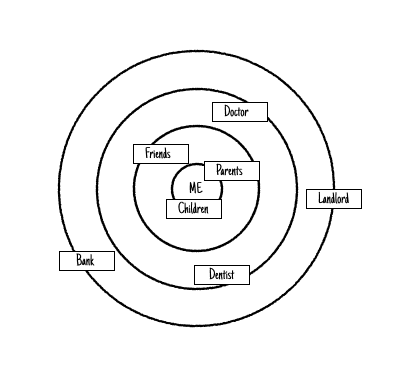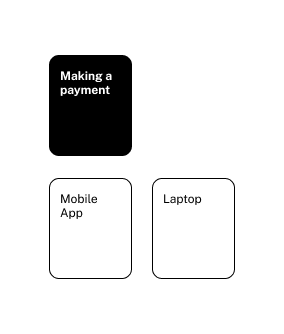How to add depth to your interviews with interactive activities
Interactive activities that encourage participants to express themselves in new ways leading to meaningful discussion and deeper insights.
User interviews are a structured conversation but that doesn't mean you only have to rely on talking to understand. By introducing discussion prompts and activities that people can interact with, you can uncover richer insights than by conversation alone.
In this post, we explore 3 different activities that you could add to your interviews, designed to surface deeper understanding through different ways of expression.
- Stickman story
- Value map
- Cards for humans
Stickman story
For this activity, all you need is a piece of paper and a pen and pens. This is a simple way for people to visualise previous experiences.
How it works:
- Start with a warm up activity of drawing a square, circle and triangle. This helps to ease any nervousness around drawing.
- Ask the participant to think about the last time the event you are researching happened.
- As the participant talks through what was happening, ask them to draw a visual representation of each step showing what was happening before, during and after the event.
- If the participant needs a prompt, ask ‘What happened next?’ as this will help to uncover the steps in their journey.
- Wait until the participant has finished the drawing before going back and asking additional questions using the drawing as a guide. Use prompts like:
- What were you feeling at this point?
- Can you help me understand more about what’s happening here?
Why it works:
- It helps participants recall details they might not mention in a verbal-only interview.
- You get a rough journey map and emotional timeline from their own point of view.
- The drawing becomes a tangible artefact you can use later when sharing insights with your team.

Value map
A value map looks a little bit like a dart board. It is used to determine how valuable or important something is to someone by placing an object either closer to or further away from the centre of the map.
How it works:
- Create a map with the topic at the centre
- Create a number of cards representing people, services, tools or anything relevant to your study that could be valued more or less given the study topic.
- Ask the participant to:
- Remove any cards that aren't relevant and explain why
- Place cards on the map, the closer to the centre, the stronger the relationship between the card and topic
- Explain their reasoning for each placement.
Why it works:
- It provides a visual representation of how the participant values different things.
- You gain insight into priorities, emotional distance, and reasoning.
- It prompts meaningful reflection and stories that might not emerge otherwise.

Cards for humans
Inspired by Cards Against Humanity (but much more research appropriate), this activity adds a fun twist to traditional card sorting.
How it works:
- Prepare two types of cards:
- Topic cards e.g. Financial tasks: Check balance, Make a payment, Download statement
- Response cards e.g. Devices: Mobile app, Tablet, Laptop
- Note: The topic and response cards should be relevant to your own study.
- Show a topic card e.g. On a table or using an online tool
- Ask the participant to place any relevant response cards down
- If more than one response card has been placed down, probe more about when one or the other would be used or relevant
- Ask the participant to collect their cards back
- Show the next topic card and continue until all of the topic cards have been responded to
Why it works:
- You gain insight into decision making and when something is relevant to a topic and when it's not.
- It encourages discussion about context when more than one response card is placed.

Final thoughts
All of these activities are simple to set up and can make your interviews more dynamic, insightful and fun. Whether you're mapping emotions, understanding priorities, or exploring behaviours, they can allow participants to express themselves in new ways.
Need Help?
If you’re looking for expertise in experience strategy, user research, service design, usability and UX we’re here to support you. Whether you're looking for advice, a helping hand or a full independent review, get in touch.
